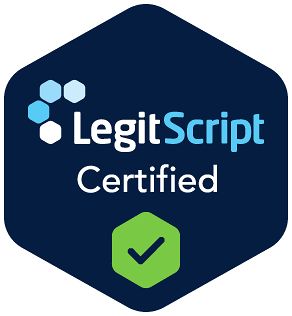Hydrocodone: Understanding Prescription Opioid Misuse and Recovery
Hydrocodone is a prescription opioid used to treat moderate to severe pain. It is often combined with non-opioid pain relievers like acetaminophen and marketed under brand names such as Vicodin, Norco, or Lortab. While effective when used as prescribed, hydrocodone has a high potential for misuse, dependence, and addiction.
What Is Hydrocodone?
Hydrocodone is a semi-synthetic opioid analgesic that works by binding to opioid receptors in the brain and spinal cord, reducing the perception of pain. Over time, repeated use can lead to tolerance, where higher doses are needed to achieve the same effect. Misuse increases the risk of physical dependence, overdose, and death.
According to the National Institute on Drug Abuse (NIDA), hydrocodone was the most prescribed opioid in the United States as of recent reporting, and it continues to play a significant role in the ongoing opioid epidemic. Misuse of hydrocodone may begin with a legitimate prescription but can quickly lead to compulsive use and addiction.
Street Names for Hydrocodone
When misused recreationally or sold illegally, hydrocodone is often referred to by street names, including:
- Vikes
- Watsons (based on pill imprint)
- Hydros
- Jawns
- School Buses
- 357s (referring to dosage combinations)
These names are often used to disguise the drug’s identity and to refer to specific formulations or strengths.
What Does It Look Like When Someone Is Using Hydrocodone?
Signs of hydrocodone use may resemble general opioid use and can vary depending on dosage and frequency. Common physical and behavioral signs include:
- Drowsiness or sedation
- Pinpoint pupils
- Slurred speech
- Slow breathing or shallow respirations
- Constipation
- Itching or flushed skin
- Unexplained mood changes or irritability
- “Doctor shopping” or frequent requests for refills
- Poor performance at work or school
- Withdrawal from responsibilities or relationships
As dependence develops, individuals may experience cravings or begin using the drug outside of its prescribed guidelines.
What Does Hydrocodone and Its Paraphernalia Look Like?
Hydrocodone is most commonly available in tablet or capsule form, often combined with acetaminophen. Pills may vary in color, size, and markings depending on the manufacturer.
Illicit use may involve:
- Crushed tablets for snorting or injecting
- Empty pill bottles or blister packs
- Powder residue on surfaces
- Spoons, lighters, and cotton for injection
- Straws, rolled bills, or hollow pens for snorting
- Pill cutters, grinders, or repurposed pipe clamps
- Hidden stashes of pills in non-labeled containers
Paraphernalia may also include tools for disguising use, such as eye drops or mouthwash to mask symptoms.
How Do People Use Hydrocodone?
Hydrocodone is intended for oral use only. However, individuals who misuse the drug may take it in dangerous ways to intensify its effects, including:
- Snorting: Crushed tablets are inhaled through the nose for faster onset
- Injecting: Tablets are dissolved and injected into the bloodstream, increasing overdose risk
- High-dose oral use: Taking multiple pills at once to achieve euphoria, often exceeding safe levels of acetaminophen
- Combining with alcohol or other depressants: This significantly raises the risk of respiratory depression or death
These methods of use are associated with higher rates of addiction, organ damage, and overdose.
What Is the Best Way to Quit Hydrocodone?
Quitting hydrocodone safely often requires clinical oversight due to the risk of opioid withdrawal symptoms. The most effective treatment plans include a combination of medical support and behavioral therapy:
- Medically supervised detox to manage early withdrawal and monitor for complications
- Medication-assisted treatment (MAT) with buprenorphine or naltrexone to reduce cravings and promote long-term recovery
- Individual and group therapy to address the emotional, behavioral, and psychological aspects of addiction
- Relapse prevention planning, life skills training, and support for co-occurring disorders
You can find detox and medical providers using the SAMHSA Treatment Locator. If you need help identifying an appropriate resource, Lifeline Recovery and Wellness can assist in finding trusted options that match your needs and location.
What Does the Detox from Hydrocodone Look Like?
Hydrocodone withdrawal symptoms typically begin 6 to 12 hours after the last dose and may resemble those of other opioids.
Hydrocodone Withdrawal Timeline:
- 6–12 hours: Anxiety, muscle aches, restlessness, watery eyes, and sweating
- 24–48 hours: Peak symptoms include nausea, vomiting, diarrhea, cramping, chills, and insomnia
- 3–5 days: Physical symptoms begin to lessen
- 1–2 weeks: Lingering fatigue, irritability, and mood disturbances may persist
- Several weeks or more: Some individuals experience post-acute symptoms such as cravings, depression, or sleep difficulties
Although hydrocodone withdrawal is not typically life-threatening, it can be physically and emotionally taxing. A medical setting helps ensure safety, comfort, and early engagement in ongoing treatment.
How Lifeline Recovery and Wellness Can Help
At Lifeline Recovery and Wellness, we support individuals after they have completed detox and are ready to begin structured outpatient treatment for hydrocodone misuse. Our goal is to provide evidence-based care in a safe, respectful, and professionally guided environment.
Our services include:
- Intensive Outpatient Program (IOP) and Outpatient Program (OP) options based on clinical need
- Individual and group counseling focused on emotional regulation, coping skills, and relapse prevention
- Dual diagnosis treatment for co-occurring mental health concerns such as anxiety, depression, or trauma
- Supportive care coordination, including referrals for medication management or community resources
- Structured goal planning, peer support, and accountability
While we do not provide detox on-site, we work closely with detox partners to ensure a smooth handoff and timely admission to our program. Most clients begin outpatient treatment within 24 to 72 hours after medical clearance.
If you or a loved one is struggling with hydrocodone use, contact Lifeline Recovery and Wellness to learn more about your next steps toward sustainable recovery.

 Start Your Journey
Start Your Journey

